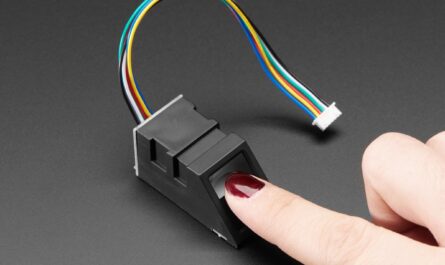What are Z-wave Devices?
An Overview of the Z-wave Protocol
Z-wave is a wireless communications protocol developed by Sigma Designs in 2001 that enables smart home connectivity for devices like lighting, security systems, thermostats and more. It uses a low-power wireless radio frequency in the 900MHz spectrum to create a mesh network within a home, allowing connected devices to communicate with each other as well as a main gateway or hub. Some key aspects of the Z-wave protocol:
– Interoperable Standard: Z-wave devices from any manufacturer can communicate as long as they support the standard, allowing for a mix of brands in one home network.
– Reliable Connections: The 900MHz frequency provides penetrating power through walls and doors for robust connectivity. Encryption is also used for secure communication.
– Self-Healing Mesh Network: If a device drops from the network, the remaining devices can still route information around it to ensure whole-home connectivity.
– Battery Operated: Many Z-wave devices are designed for battery power for years of operation without wiring, making retrofits easy.
– Wide Range of Functions: Z-wave supports lighting control, security sensors, thermostats, locks and various small appliances.
Popular Z-wave Product Categories
Smart Lighting
Some of the most popular Z-wave Products are smart bulbs, switches, dimmers and light strips which allow full remote control and automation of lighting from a smartphone. Manufacturers like GE, Philips Hue, Aeotec and Nexxus offer a variety of lighting options that work with all major hub brands for multi-room lighting scenes and schedules. Voice control through Alexa, Google Assistant and Siri is also supported.
Security Systems
Z-wave is commonly used in DIY and professional alarm kits for door/window sensors, motion detectors, water sensors and more. Companies like Fibaro, GoControl and Aeotec offer both standalone sensor pods and fully-integrated alarm panels. When combined with a hub, these systems provide smartphone alerts, automated rules like turning on lights when doors open, and can integrate with professional monitoring for round-the-clock protection.
Thermostats
Smart thermostats from brands like Honeywell, tado°, and Evohome use Z-wave to remotely control home heating and cooling systems from any location. In addition to scheduled temperature adjustments, many advanced models can integrate weather forecasts and geofencing with a user’s smartphone location to automatically optimize energy usage. Some even double as remote temperature and humidity sensors throughout the home.
Small Appliances
Although not as widespread as lighting and security, Z-wave is increasingly found in small appliances and power outlets to enable smart functionality. For example, certain coffee makers, blenders, air purifiers and power strips allow remote on/off control and power usage monitoring through a hub integration. This makes domestic tasks more convenient and insights into energy consumption more visible.
The Growth of the Z-wave Ecosystem
As Z-wave gains more consumer awareness, an expanding market of compatible products and platform options is fueling greater adoption rates. According to a report by Persistence Market Research, the global smart home market using technologies like Z-wave is projected to reach $154 billion by 2023. Some key industry developments:
– Increasing Manufacturer Support: Large companies like Legrand, Schlage and Lutron have introduced their own Z-wave lines, bringing recognizable brands into the ecosystem. Independent manufacturers continue expanding offerings in new categories as well.
– Choice of Hubs: Options for controlling Z-wave Products include mainstream options from Samsung SmartThings, Wink and Vera, as well as specialized hubs from Universal Devices, Zipato and others. Voice control is also integrated through hubs or standalone switches/displays.
– Third Party Development: The emergence of the IoT has energized the independent developer community around Z-wave with new apps, integrations and customization options through open application programming interfaces (APIs).
– Do-It-Yourself Trend: As setting up a smart home becomes more approachable, the affordable, easy installation of many Z-wave devices directly addresses the growing DIY audience. Products designed for retrofits without rewiring expand the compatible spaces.
The Future of Z-wave products Technology
With key alliances and standards bodies helping to broaden awareness, the future looks promising for continued advancement in Z-wave specifications and products. Some technology watchers predict the following trends:
– New Frequency Regulations: Owners Sigma Designs have expressed hope that new global regulatory approvals will open access to additional wireless spectrum, potentially increasing speeds or allowing larger networks of devices.
– Advanced Device Functions: Manufacturer roadmaps point to enhanced sensors, more sophisticated mesh networking capabilities, and increased processing power in devices enabling new home automation routines.
– Artificial Intelligence Integration: Partnering AI voice assistants, from Amazon Alexa to Google, could make Z-wave systems even smarter through contextual recommendations based on behavior patterns and household preferences.
– Simpler Commissioning: Initiatives to streamline the setup process through quick buttons or mobile onboarding would enhance the user experience for new and casual users bringing more mass adoption.
As an open, mature protocol, Z-wave products appears well positioned to play a continuing significant role in the future of smart homes for both DIY and professional solutions. Its established ecosystem stands to gain from expanded support of major manufacturers and technological evolutions that simplify use and expand capabilities for homeowners.
*Note:
1. Source: Coherent Market Insights, Public sources, Desk research
2. We have leveraged AI tools to mine information and compile it




